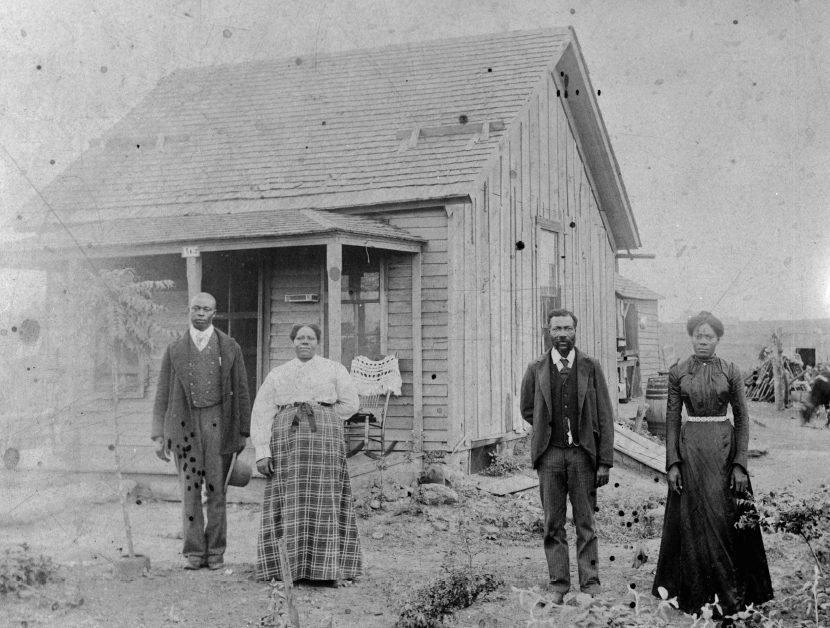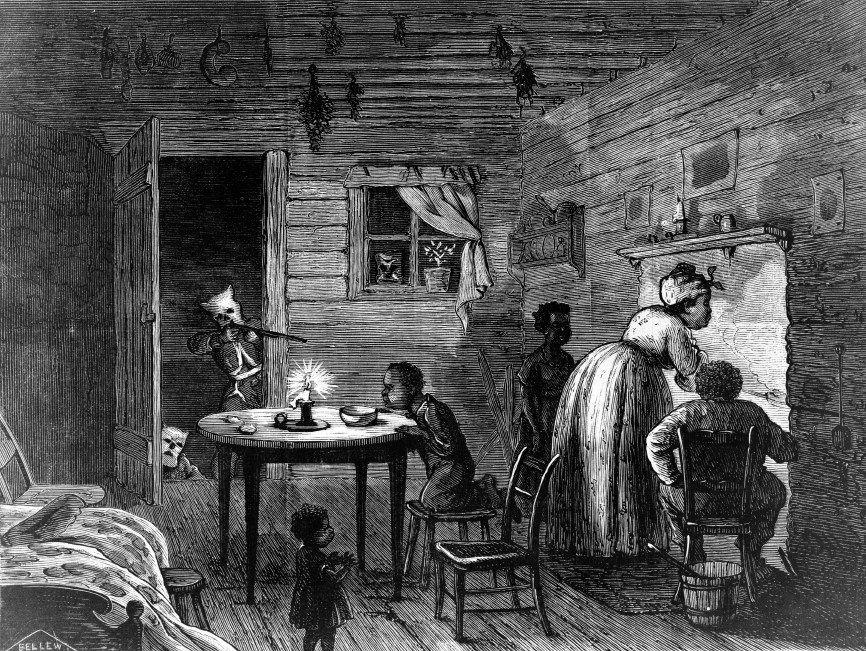Exploring American Histories: Printed Page 441
Exploring American Histories, Value Edition: Printed Page 366
White Resistance to Congressional Reconstruction
Despite the Republican record of accomplishment during Reconstruction, white Southerners did not accept its legitimacy. They accused interracial governments of conducting a spending spree that raised taxes and encouraged corruption. Indeed, taxes did rise significantly, but mainly because of the need to provide new educational and social services. Corruption, where building projects and railroad construction were concerned, was common during this time. Still, it is unfair to single out Recon-struction governments and especially black legislators as inherently depraved, as their Democratic opponents did. Economic scandals were part of American life after the Civil War. As enormous business opportunities arose and the pent-up energies that had gone into battles over slavery exploded into desires to accumulate wealth, many business leaders and politicians made unlawful deals to enrich themselves.

Most Reconstruction governments had only limited opportunities to transform the South. By the end of 1870, civilian rule had returned to all of the former Confederate states, and they had reentered the Union. Republican rule did not continue past 1870 in Virginia, North Carolina, and Tennessee and did not extend beyond 1871 in Georgia and 1873 in Texas. In 1874 Democrats deposed Republicans in Arkansas and Alabama; two years later, Democrats triumphed in Mississippi. In only three states—Louisiana, Florida, and South Carolina—did Reconstruction last until 1877.
The Democrats who replaced Republicans trumpeted their victories as bringing “redemption” to the South. Of course, these so-called Redeemers were referring to the white South. For black Republicans and their white allies, redemption meant defeat, not resurrection. Democratic victories came at the ballot boxes, but violence, intimidation, and fraud usually paved the way. It was not enough for Democrats to attack Republican policies. They also used racist appeals to divide poor whites from blacks and backed them up with force. In 1865 in Pulaski, Tennessee, General Nathan Bedford Forrest organized Confederate veterans into a social club called the Knights of the Ku Klux Klan (KKK). The name came from the Greek word kuklos, meaning “circle.” Spreading throughout the South, the KKK did not function as an ordinary social association; its followers donned robes and masks to hide their identities and terrify their victims. Ku Kluxers wielded rifles and guns and rode on horseback to the homes and churches of black and white Republicans to keep them from voting. When threats did not work, they murdered their victims. In 1871, for example, 150 African Americans were killed in Jackson County in the Florida Panhandle. A black clergyman lamented, “That is where Satan has his seat.” Here and elsewhere, many of the individuals targeted had managed to buy property, gain political leadership, or in other ways defy white stereotypes of African American inferiority. Local rifle clubs, hunting groups, and other white supremacist organizations joined the Klan in waging a reign of terror. During the 1875 election in Mississippi, which toppled the Republican government, armed terrorists killed hundreds of Republicans and scared many more away from the polls.

To combat the terror unleashed by the Klan and its allies, Congress passed three Force Acts in 1870 and 1871. These measures empowered the president to dispatch officials into the South to supervise elections and prevent voting interference. Directed specifically at the KKK, one law barred secret organizations from using force to violate equal protection of the laws. In 1872 Congress established a joint committee to probe Klan tactics, and its investigations produced thirteen volumes of vivid testimony about the horrors perpetrated by the Klan. Elias Hill, a freedman from South Carolina who had become a Baptist preacher and teacher, was one of those who appeared before Congress. He and his brother lived next door to each other. The Klansmen went first to his brother’s house, where, as Hill testified, they “broke open the door and attacked his wife, and I heard her screaming and mourning [moaning]. . . . At last I heard them have [rape] her in the yard. She was crying and the Ku-Klux were whipping her to make her tell where I lived.” When Klansmen finally discovered Elias Hill, they dragged him out of his house, accused him of preaching against the Klan, beat and whipped him, and threatened to kill him. On the basis of such testimony, the federal government prosecuted some 3,000 Klansmen. Only 600 were convicted, however. As the Klan disbanded in the wake of federal prosecutions, other vigilante organizations arose to take its place.
Review & Relate
|
What role did black people play in remaking southern society during Reconstruction? |
How did southern whites fight back against Reconstruction? What role did terrorism and political violence play in this effort? |